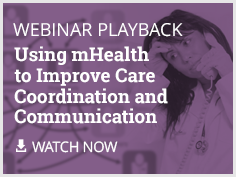At Care Thread, we believe that patient safety is all about successful collaboration between providers to deliver the best possible care with the best possible outcomes. Critical to this success is
clear and direct communication among providers.
Yet, too often we read studies that directly link medical errors to poor communication between providers.
If we look at the current tools of provider communication—pagers, desk phones, email, EMRs, paper charts and reports—they represent healthcare’s culture of bottlenecks and breakdowns in communication. All are antiquated, inefficient modes of communication that impact the speed, quality, and safety of patient care.
Which is why we take issue with a recent column in MedCityNews, “Achieving Patient Safety with EMRs.” Its author contends that EMRs are an “effective solution to problems such as communication.” Though we know that nothing can replace the context and color of an in-person conversation between providers, to say EMRs solve communication problems is akin to saying that dirigibles are an efficient means of air travel.
We live in a time where mobile technology enables communication to happen in real time. Notifications on our smartphones and tablets pop up when we have a new text message, breaking news story, or even when it’s our turn to play Words with Friends. Providers today, especially those now entering their residency programs, representing the future of medicine, expect the convenience of communication that the mobile technology in their pocket affords them.
EMRs? Not so much.
Most EMRs require users to manually access the system to retrieve information. While this self-service of obtaining information from a central repository is vastly more efficient than retrieving paper patient records and files, the fact that providers must access a computer or workstation to query patient data without knowing its availability is an inefficient [and expensive] use of provider time. EMRs generally do not push out notifications when new information is available, charts amended, or messages sent. Continually checking an EMR for patient information or messages creates bottlenecks in collaborative workflows, wasting valuable time that a provider could more effectively spend with a patient in-person.
Patient safety is a collective endeavor that requires strong coordination across a diverse team of providers and professionals both inside the hospital and across the patient’s healthcare ecosystem. Provider communication needs to reside in a dynamic, responsive environment that can be accessed through a variety of tools and accessible by many, not in a state of lagging response on fixed systems with limited access points for certain people. Delays of clinical conversations, even from one provider to another, can have adverse effects on the patient as noted by the Institute of Medicine and Joint Commission, among others.
As healthcare evolves into an accountable care model, there is a need for a central, virtual platform for all members of a care team to communicate and collaborate to ensure proper execution of the care plan. Yet, not everyone has access to the EMR. In fact, most providers outside of the hospital walls do not have direct access to EMRs. Even if all providers did, most EMRs tend not to have suitable facilities for real-time, person-to-person communication, which is why organizations often opt for pagers. HIEs do extend the reach among healthcare organizations, though still not to all members of the extended team.
Mobile tools exist today, including Care Thread, that support a collaborative, patient-centered environment for providers to securely communicate in real-time and with context about a patient. With a few taps on a smartphone, tablet, or web browser, Care Thread users can directly message fellow members of a patient’s care team, access new labs and reports as they are pushed out in real time, share hand-offs between providers or across services, and leverage the collective experience of a network of providers for more informed decision-making.
Nothing equals the power of an in-person conversation between providers; however, healthcare communication should not be transactional. The tools used to communicate among providers should foster a collaborative environment, yielding immediate actions with results that improve patient outcomes and satisfaction. Healthcare organizations that are serious about improving both care coordination and patient safety should consider clinical mobility and communication platforms such as Care Thread as an essential element to delivering truly patient-centered care.





